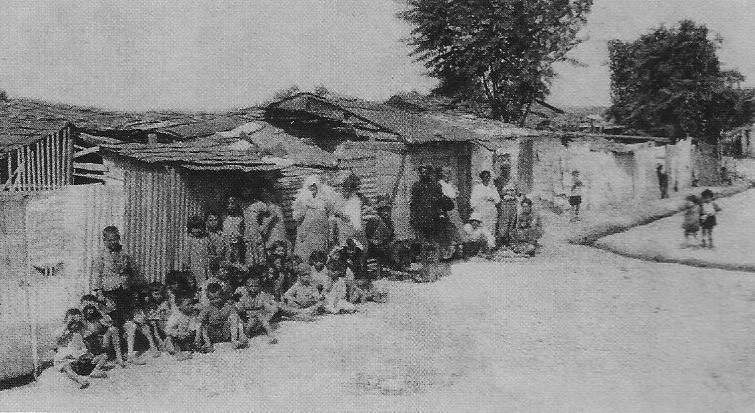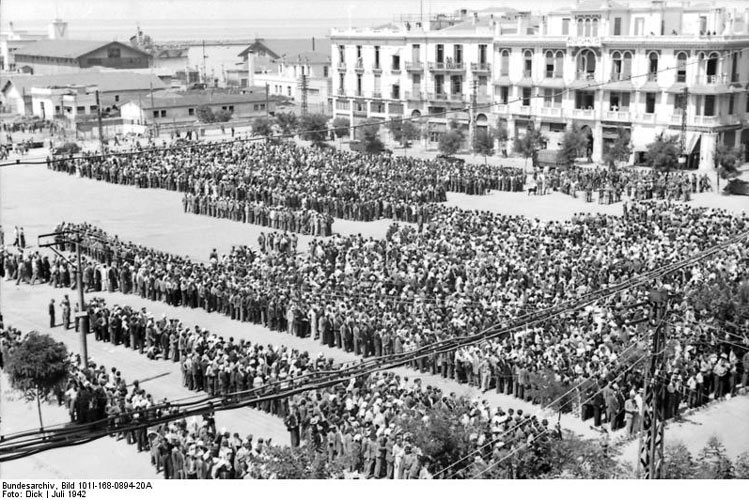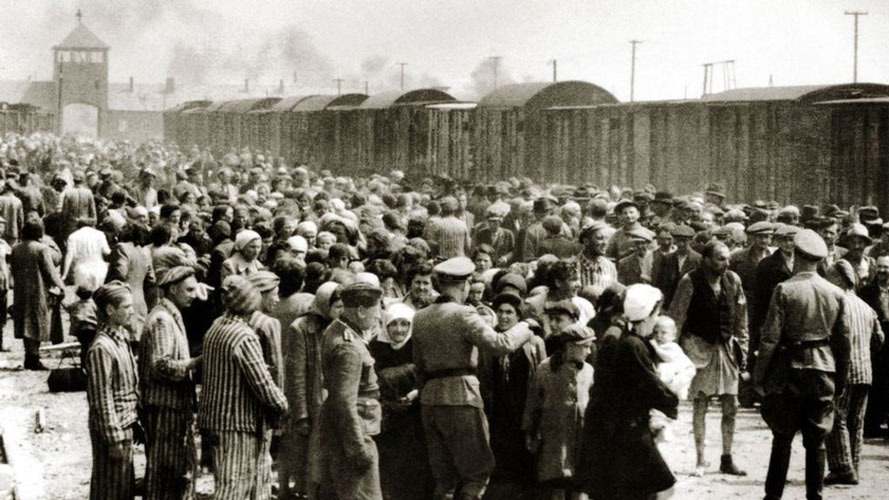Greece entered the Second World War after Italy’s invasion and the Greek-Italian war was declared on the 28th October 1940. Thousands of Jews were among the Greeks who were called to arms. At least 450 Jews of Thessaloniki died and Colonel Mordechai Frizis, a Jew from Chalkida, was one of the first army officers to die while fighting.
Germany invaded Greece on April 6, 1941 pressing overwhelmingly the Greek forces that were effectively under a two-sided attack. German forces showed immediately their superiority. The Greek defence line was overrun and Wehrmacht marched on the Greek territory quickly. On April 9, 1941 German troops entered Thessaloniki marking the beginning of the Occupation of the city.
The triple occupation (Germany, Italy and Bulgaria) of Greece was followed by widespread expropriation of its natural and economic resources while all the occupant countries treated Greeks harshly. The naval blockade of Greece, the use of its means for the supply of the occupying forces and the shortage of basic goods brought the country to a breaking point as Greek cities were battling with starvation.
Thousands of people died in the big cities by the famine. Municipal pushcarts collected the famished lifeless bodies lying on the sidewalks. The most underprivileged were struck by hunger and poverty. Famine hit Thessaloniki and its western districts, resided mostly by Jews. Hundreds of dead Jews were recorded in the districts of Ksirokrini, Rezi Vardar, Station Chica and Teneke Mahalla, that were gravely affected.

The poor neighbourhood of Teneke mahalla in the 1930s.
Jewish communities worried deeply about the presence of Nazis in Greece because they were aware of the brutal treatment the Jews suffered in Germany and the occupied countries. However, they had not yet realized the gruesome crimes committed in a massive scale in Eastern Europe.
Just ten days after the entry of Germans in Thessaloniki, the Kommando Rosenberg arrived. It was a Nazi specialized force tasked with looting the European Jewish communities and the Jewish valuable cultural relics and treasures. Nazis aimed at the Sephardic Jewish Community of Thessaloniki, seized its archives and religious and cultural artefacts.
After the first few weeks of the Occupation the situation normalized and Jews of Thessaloniki considered themselves safe for the time being. Still, in several occasions Jews were discriminated; their houses and businesses were requisitioned.
In July 1942 the Germans unveiled their true intentions. The occupiers planned to use Greek citizens as forced labourers to work for them. Thessaloniki’s pro-Nazi dependent press (“Nea Evropi”, “Apogevmatini”) incited the conscription of Jews and not Christians for forced labour and the Greek competent authorities suggested so.
The events that took place on the “Black Sabbath” July 11, 1942 marked the beginning of the end for the Jews of Thessaloniki. Jews were standing for hours under the hot sun, without food or water and were being humiliated by German soldiers. The photos depict the cruel conditions and the mistreatment of Jews who were forced to do “gymnastic exercises”. Immediately after the end of this dramatic event, most Jews were sent on forced labour in the region of Thessaloniki.

The “Black Sabbath” on July 11, 1942 in Eleftherias Square
The inhumane living conditions and the lack of food led dozens of Jewish forced labourers to death. Eventually the Jewish community was forced to pay a staggering 2 billion drachmas to buy their temporary -as it was proven- freedom from forced labour. The expropriation of the Jewish cemetery, which was handed to the Municipality of Thessaloniki, was used to pay the remaining ransom money that the Jewish community could not collect.
Deportation
The arrival of an SS unit under the command of Dieter Wisliceny and Alois Brunner brought the immediate implementation of anti-Jewish measures. All orders imposing racial measures were signed by the military administrative counsellor Maximilian Merten revealing his leading role in the Jewish persecution. All orders signed by Wisliceny during that time were clarifying amendments to Merten’s orders.
Jews were ordered, among others, to wear a yellow star, not to visit central roads after dark, to confine themselves in designated districts-ghettos and to hand their radio devices and telephones over.
On February 13, 1943 it was ordered that any Jew who was found away from his declared place of residence was to be shot on the spot.

The arrival at Auschwitz and the selection process for the crematoria
On Monday March 15, 1943 the deportation began. 46.061 Jews were deported with 19 transports in total to death camp Auschwitz-Birkenau. In this way the decimation of the largest Jewish community of the Balkans was completed.
Less than 2,000 Jews were alive after the end of the war.

